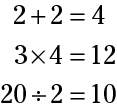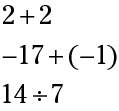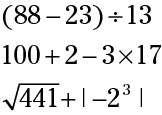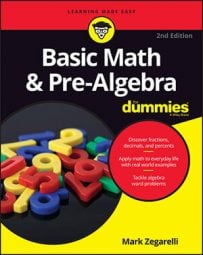An equation is a mathematical statement that tells you that two things have the same value — in other words, it's a statement with an equals sign. The equation is one of the most important concepts in mathematics because it allows you to boil down a bunch of complicated information into a single number.
Mathematical equations come in a lot of varieties: arithmetic equations, algebraic equations, differential equations, partial differential equations, Diophantine equations, and many more.
Arithmetic equations are equations involving numbers, the Big Four operations, and the other basic operations (absolute values, exponents, and roots). Here are a few examples of simple arithmetic equations:

And here are a few examples of more-complicated arithmetic equations:

Hey, it's just an expression
An expression is any string of mathematical symbols that can be placed on one side of an equation. Mathematical expressions, just like equations, come in a lot of varieties. Arithmetic expressions contain numbers, the Big Four operations, and a few other basic operations. Here are a few examples of simple expressions:

And here are a few examples of more-complicated expressions:

Evaluating the situation
At the root of the word evaluation is the word value. In other words, when you evaluate something, you find its value. Evaluating an expression is also referred to as simplifying, solving, or finding the value of an expression. The words may change, but the idea is the same — boiling down a string of numbers and math symbols to a single number.
When you evaluate an arithmetic expression, you simplify it to a single numerical value — in other words, you find the number that it's equal to. For example, evaluate the following arithmetic expression:
7 x 5
How? Simplify it to a single number:
35
Putting the three E's — equations, expressions, and evaluation — together
You're probably dying to know how the Three E's — equations, expressions, and evaluation — are all connected. Evaluation allows you to take an expression containing more than one number and reduce it to a single number. Then you can make an equation, using an equals sign to connect the expression and the number. For example, here's an expression containing four numbers:
1 + 2 + 3 + 4
When you evaluate it, you reduce it to a single number:
10
And now you can make an equation by connecting the expression and the number with an equals sign:
1 + 2 + 3 + 4 = 10

